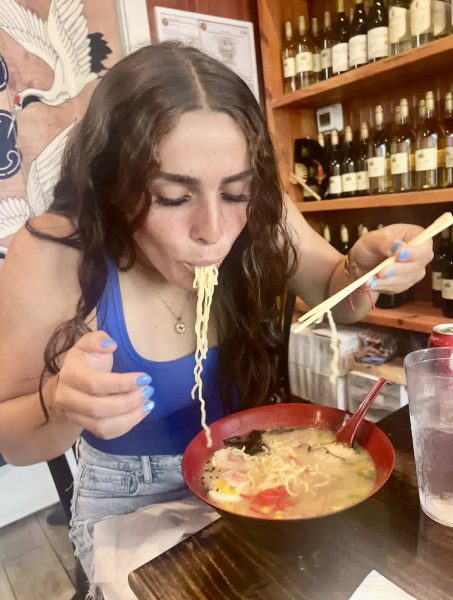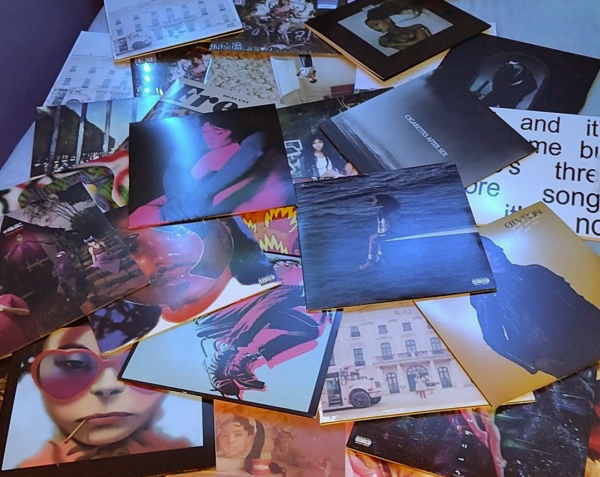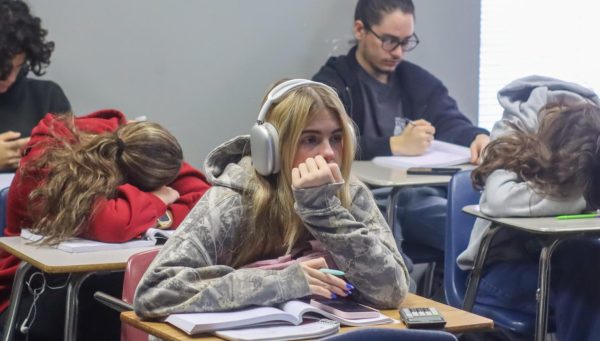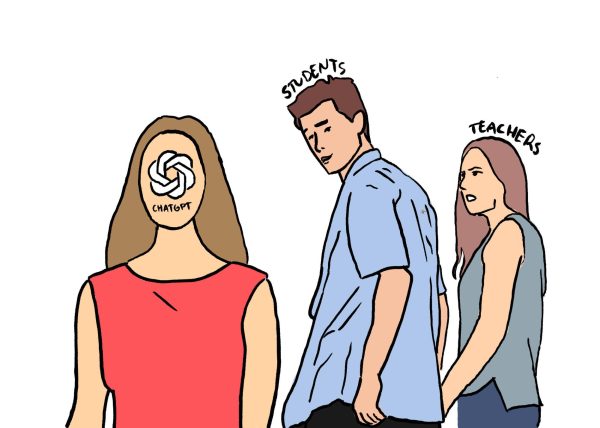Molding a new program
photo by Kacy Lach
Ceramics/Pottery 1 student, freshman Julia Plescha shapes and smooths her Native American wedding vase. Plescha made the base of her vase using a pottery wheel before creating the upper part via coils.
Native American wedding vases and themed mugs are a couple of the projects completed in the new 3-D Art program, a big change from the old, broad focus on well-known projects like paper mâché and aluminum constructions.
Art teacher Lisa Smith joined the staff this year, taking over the 3-D Art program from current 2-D art teacher Mary Marinel. Upon arrival, she steered the current program away from inexpensive, easy projects that utilize materials like paper and wire, toward more complex ceramics and pottery projects.
“Paper mâché is a big part of 3-D Art [programs] because it’s cheap,” Smith said, “But the outcome of the projects are not something you would see kids keeping forever and showing their own kids.”
She backed this by getting rid of the upper levels of Art 3-D and replacing them with Ceramics/Pottery, leaving the program with Creating Three-Dimensional Art, Ceramics/Pottery 1 and Advanced Placement Studio Art 3-D Design Portfolio.
“The students ask me, ‘We’ve already taken Ceramics 1. We don’t want to take Art 3-D, so what do we do now?’” Smith said.
Looking forward, Smith has added additional Ceramics/Pottery classes for passionate students.
“I like the fact that they are expanding it because people like me want to keep improving,” sophomore Amanda Wojtasiak said. “More levels added means there are [more] opportunities for me to get better.”
Smith’s favorite thing about ceramics is how the class is student-driven with the medium itself motivating students.
“I don’t even have to do anything [to motivate them],” Smith said, “I just give them clay and you would think I gave them something like gold.”
3-D Art teacher on the expansiveness of ceramics and pottery
Another unique part of Smith’s classes is her approach towards teaching. While still giving lectures on the fundamentals of art and the history behind current projects, she allows her students freedom when working on their creations.
“She helps me when I need her to, but she doesn’t actually do the work for me,” freshman Katie McKeel said. “She guides me through it.”
While staying within certain guidelines including what the project is supposed to be, such as a vase or plate, students are still able to add their own individual touches.
Different techniques, such as choosing to make the base of a vase on wheel versus with coils, also allows students individuality in their work.
In advanced classes next year, Smith wants to introduce other aspects that accompany making projects, including the chemistry and physics behind clay and glaze. Smith plans to emphasize the importance of researching and tying in other subjects.
“One little thing that’s off can throw the whole glaze off, or if your kiln doesn’t fire exactly to temperature at exactly rate it is supposed to, it throws everything off,” Smith said.
The medium offers a learning experience besides the trial and error that comes with crafting different works.
“You don’t just miss a question on a test, your piece falls apart,” Smith said, “so each time, you learn from every mistake.”
For students who advance to Ceramics/Pottery 3, they have the chance to see what is like to be an artist a professional. Like actual artists, they will each design their own website where they will see what it is like to market and sell their own ceramics work.
“I want the students to have as much real-world experience as possible, and that’s what I have tried to set the program up as,” Smith said. “I would eventually like to see it as just ceramics all the way across the board because [everyone] loves clay.”
Your donation will support the student journalists of Hagerty High School. Your contribution helps us publish six issues of the BluePrint and cover our annual website hosting costs. Thank you so much!









